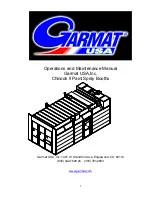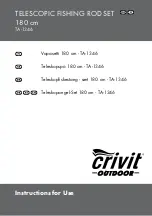
40
Chorus
Two types of Chorus are available: the simple
Classic Chorus and the Advanced type that
includes a couple of extra parameters.
The basic idea of a chorus effect is to split the
signal and pitch modulate one of the signals
slightly, and then mix the two signals again.
Classic Chorus
Speed
Range: 0.050 Hz to 20 Hz
This parameter sets the speed of the effect.
Depth
Range: 0 to 100 %
The Depth parameter specifies the intensity of
the effect. The value represents the amplitude
of the modulating waveform.
Tempo
Range: Ignore, 2 to 1/32T (T= Triplet & D=
Dotted)
When set to any value between 2 and 1/32T,
the Global Tempo is subdivided according to
this setting. When set to “Ignore”, the speed set
by the Speed parameter is used instead.
The Tap Master parameter – located in
the Global menu – specifies whether
the Global tempo or the tempo set by
the Speed parameter in each preset
should be used at preset change.
Hi-Cut
Range: 20 Hz to 20 kHz
This parameter reduces the high-end
frequencies in the Chorus effect. Try using this
parameter if you feel the Chorus effect is too
dominant in your sound and turning down the
Mix or Out level doesn’t give you the
dampening of the Chorus effect you are looking
for.
Mix
Range: 0 to 100 %
This parameter sets the relationship between
the level of the dry signal and the level of the
effect in this block.
OutLev – Out Level
Range: -100 to 0 dB
This parameter sets the overall output level for
this effect.
Advanced Chorus
In additional to the parameters of the Classic
Chorus, the Advanced Chorus offers the
following settings:
Cho Dl – Chorus Delay
Range: 0 to 50 ms
As described earlier, a Chorus/Flanger is
basically a delay being modulated by an LFO.
This parameter allows you to change the length
of that delay.
A typical Chorus uses delay times around 10
ms, while a Flanger uses delays around 5 ms.
Although this not how a chorus is
normally used, you may enjoy the
“slap-back” resulting from longer Delay
times such as 30 to 50 ms.
Gold – Golden Ratio
Settings: Off/On
TC research has shown that when the speed of
a modulation effect is increased, its depth
should be decreased accordingly to achieve the
same amount of perceived modulation. When
the Golden Ratio parameter is set to “On”, this
value is automatically calculated. Golden Ratio
is a feature inherited from the classic TC 2290
processor.
Phase Reverse
Settings: Off/On
Setting this parameter to “On” reverses the
phase of the processed signal in the right
channel. This gives a very wide Flange effects
and a less defined sound.
MODULATION















































